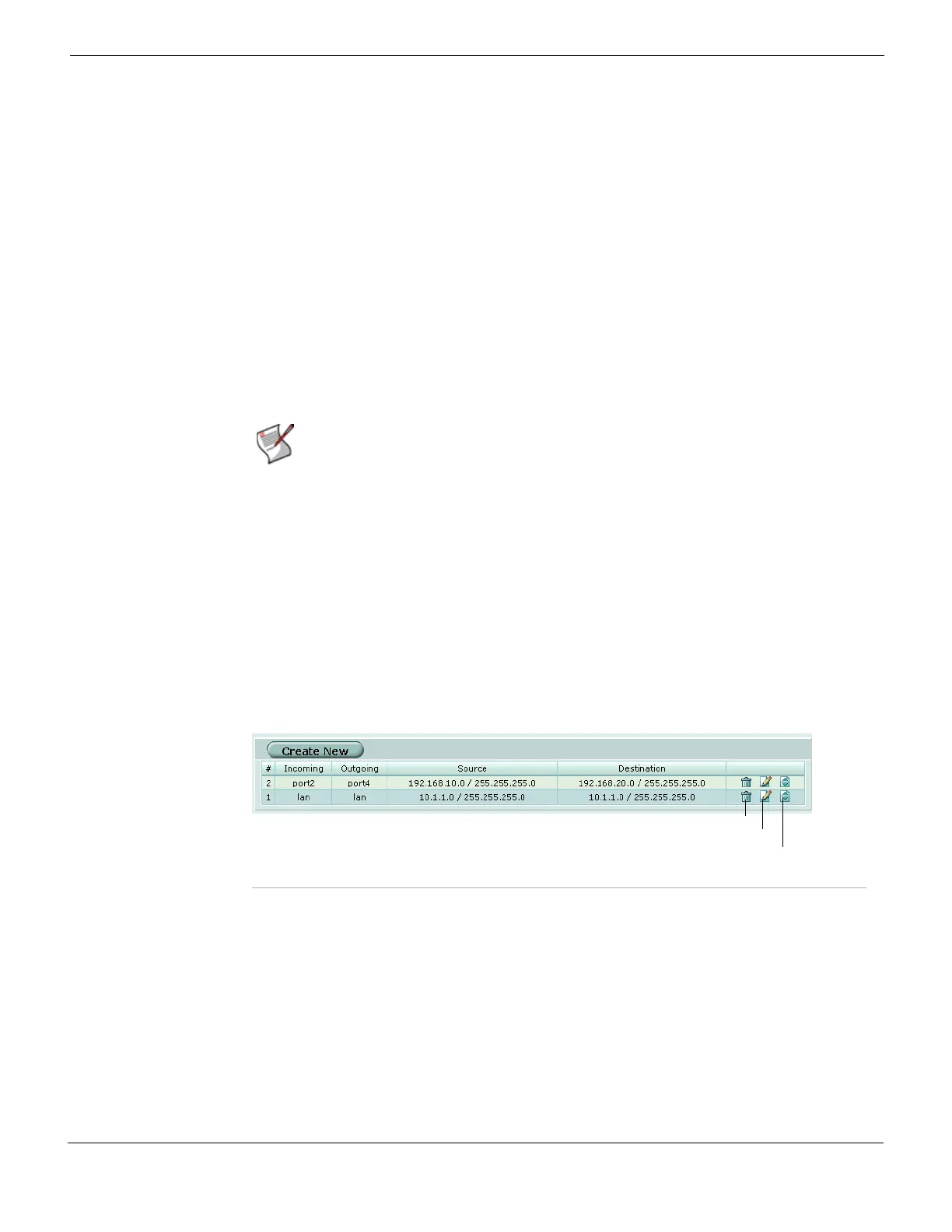Router Static Policy Route
FortiGate Version 4.0 MR1 Administration Guide
01-410-89802-20090903 351
http://docs.fortinet.com/ • Feedback
Policy Route
A routing policy allows you to redirect traffic away from a static route. This can be useful if
you want to route certain types of network traffic differently. You can use incoming traffic’s
protocol, source address or interface, destination address, or port number to determine
where to send the traffic. For example, generally network traffic would go to the router of a
subnet, but you might want to direct SMTP or POP3 traffic addressed to that subnet
directly to the mail server.
If you have configured the FortiGate unit with routing policies and a packet arrives at the
FortiGate unit, the FortiGate unit starts at the top of the Policy Route list and attempts to
match the packet with a policy. If a match is found and the policy contains enough
information to route the packet (a minimum of the IP address of the next-hop router and
the FortiGate interface for forwarding packets to it), the FortiGate unit routes the packet
using the information in the policy. If no policy route matches the packet, the FortiGate unit
routes the packet using the routing table.
Policy route options define which attributes of a incoming packet cause policy routing to
occur. If the attributes of a packet match all the specified conditions, the FortiGate unit
routes the packet through the specified interface to the specified gateway.
Figure 183 shows the policy route list belonging to a FortiGate unit that has interfaces
named “external” and “internal”. The names of the interfaces on your FortiGate unit may
be different.
To edit an existing policy route, see “Adding a policy route” on page 352.
Figure 183: Policy Route list
Note: Most policy settings are optional, so a matching policy alone might not provide
enough information for forwarding the packet. The FortiGate unit may refer to the routing
table in an attempt to match the information in the packet header with a route in the routing
table. For example, if the outgoing interface is the only item in the policy, the FortiGate unit
looks up the IP address of the next-hop router in the routing table. This situation could
happen when the interfaces are dynamic (such as DHCP or PPPoE) and you do not want
or are unable to specify the IP address of the next-hop router.
Create New Add a policy route. See “Adding a policy route” on page 352.
# The ID numbers of configured route policies. These numbers are sequential
unless policies have been moved within the table.
Incoming The interfaces on which packets subjected to route policies are received.
Outgoing The interfaces through which policy routed packets are routed.
Source The IP source addresses and network masks that cause policy routing to occur.
Destination The IP destination addresses and network masks that cause policy routing to
occur.
Delete icon Delete a policy route.
